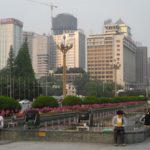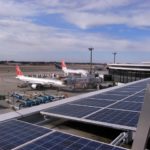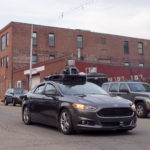
WRI is engaging in Habitat III – the United Nations Conference on Housing and Sustainable Urban Development in Quito, Ecuador, October 17-20 – to help create the sustainable, equitable, prosperous cities of the future. Ani Dasgupta, Global Director of WRI ...


The WRI Ross Center for Sustainable Cities’ Sustainable and Livable Cities Initiative supports key leaders in China, India and Brazil in improving urban quality of life and environmental sustainability. WRI’s blog series on the Initiative will highlight some of the projects that ...


The WRI Ross Center for Sustainable Cities’ Sustainable and Livable Cities Initiative supports key leaders in China, India and Brazil in improving urban quality of life and environmental sustainability. WRI’s blog series on the Initiative will highlight some of the projects that ...


What do a sun-harnessing mapping tool and a nighttime-venturing, camera-rigged SUV have in common? They both may hold an answer to scalable, cost-effective solutions to make our built environment more sustainable. As cities and citizens look to make buildings more ...


The WRI Ross Center for Sustainable Cities’ Sustainable and Livable Cities Initiative supports key leaders in China, India and Brazil in improving urban quality of life and environmental sustainability. WRI’s blog series on the Initiative will highlight some of the ...


The New Urban Agenda – a vision of inclusive, resilient, sustainable cities where everyone has access to resources and economic opportunity – will be center stage next month at the United Nations Conference on Human Settlements, known as Habitat III. ...


Nossa Cidade (“Our City”), from TheCityFix Brasil, explores critical questions for building more sustainable cities. Leaning on the expertise of specialists at WRI Brasil Sustainable Cities, the series features in depth articles on urban planning, sustainable mobility, resilience, road ...


Last week, the final draft of the New Urban Agenda (NUA)—the document at the center of Habitat III in Quito next month—was released. After an unexpected stalemate at the Preparatory Committee in Surabaya in July, Habitat III negotiators convened this ...


The future is here, or it is very close: Uber announced “driverless” car services in downtown Pittsburgh; nuTonomy, a MIT spin-off technology company, just started commercial trials of autonomous taxis in Singapore. These developments come way before car manufacturers and ...


The Summer Olympics are the largest sporting event, with 205 participating nations and billions of television viewers around the world. From the 1996 Games in Atlanta to the 2008 Games in Beijing, the Olympic TV audience grew from 3.2 to ...

Page 90 of 348« First...1020...899091...100110...Last »